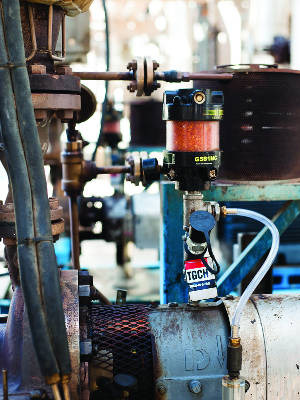Ask the Experts
“What are the top three characteristics you look for when considering an oil analysis laboratory (i.e., turnaround time, price, quality, capabilities, etc.)?”
Selecting an oil analysis laboratory can be daunting if you don’t know where to begin. Once you make the decision to initialize an oil analysis program at your plant or to find a quality lab other than the one offered by your oil supplier, there are several important factors to consider. Te following three attributes will be key to building a successful relationship with your oil analysis lab.
 Quality of Testing
Quality of Testing
Many laboratories struggle to meet their customers’ expectations because of mishaps in testing procedures. A quality lab will make efforts to follow ASTM or ISO test procedures in order to maintain the utmost accuracy in analysis interpretation. Be sure to fnd out whether there will be any deviations to the standardized test procedures, which should be followed for all types of testing instruments. Also, do not be afraid to ask questions.
Data Interpretation
An oil analysis report is not intended to be just a sheet of paper with raw data results. These tests can be quite complicated, so it may not be easy to determine an obvious concern, let alone an inconspicuous or unusual one. Te best oil analysis reports come complete with a full analysis interpretation summary. This should not be computer generated but tailored by a specialist. Te report should also have graphs that show trend data, along with a comparison to the baseline, as well as critical and cautionary limits. Finally, the report should feature a layout that is easy to understand.
Customer Service
The services an oil analysis laboratory offers should go beyond those relating simply to the oil samples. Te individual in charge of receiving the reports at the plant should be in frequent communication with those who interpret data at the lab to collaborate on possible explanations for data anomalies and to obtain expert advice on determining the best course of action. Te laboratory should also offer a hotline to provide quality customer service whenever you need it. Please note that price is not included in this list, as you should expect the cost of laboratory services to remain competitive. Also, in regard to price, it is important to keep in mind that a single machine failure that is avoided through oil analysis can justify an entire year or more of the oil analysis program.
“Can you offer any advice on selecting desiccant breathers for gearboxes in the mining industry?"
 Which factor plays more of a role in breather selection: the sump head-space above the oil level, ambient conditions like high humidity or a dusty environment, the machine type (mobile unit or fixed installation), the type of oil and its application, or the oil’s cleanliness requirement?”
Which factor plays more of a role in breather selection: the sump head-space above the oil level, ambient conditions like high humidity or a dusty environment, the machine type (mobile unit or fixed installation), the type of oil and its application, or the oil’s cleanliness requirement?”
Desiccant breathers are great contamination control accessories for machines that would otherwise be breathing in dirty, wet air. These devices allow for the air being ingressed by the machine to be cleaned of particulate matter and also dried to help control the amount of water in the oil. This becomes very important in critical machinery as well as those that are in harsh environments where the oil may become contaminated and break down quickly.
These breathers have a particulate filter phase and a moisture absorption phase. Both of these phases are essential not only for the health of the lubricant but also for the health of the machinery. Solid particulate contaminants can lead to machinery failure mechanisms such as three body abrasive wear. Moisture contamination can result in adhesive failure mechanisms and increase the rate at which lubricants break down.
Oil by nature is hygroscopic, which means it will absorb moisture readily from any source, including from humidity in the air. By utilizing a desiccant breather, you can reduce the amount of moisture in the air that is entering the system.
The head-space is important to keep in mind, as it can help determine the amount of “breathing” that will occur inside the machine. Therefore, it is imperative to understand how much the head-space can fluctuate. For instance, the head-space in a splash-lubricated gearbox will fluctuate less than that of a hydraulic system reservoir where there are large volumetric changes within the sump. This volumetric flow rate must be within the breather’s capabilities, or it may cause a vacuum or pressurization condition inside the component.
The environment in which the machine operates should be considered as well. For severe environments, such as those with water spray and large amounts of dirt, select a desiccant breather that can handle the expected amounts of contamination. For the most severe environments, you might choose a breather with a check valve or bladder assembly to help prolong the desiccants life.
The cleanliness level required by the machine must also be taken into account when determining the desired desiccant quality. Of course, the more critical machines should receive the most attention.
Considering all of these variables will provide the most effective way to select a desiccant breather. While a number of options are available, some are better suited for certain situations. Remember, it is far better to provide more protection than needed rather than to skimp on quality in order to save money.
If you have a question for one of Noria’s experts, email it to editor@noria.com.
